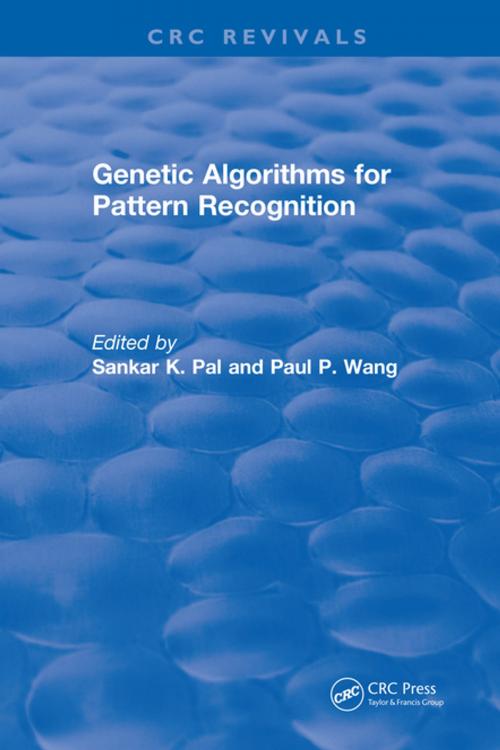Genetic Algorithms for Pattern Recognition
Nonfiction, Computers, Programming, Systems Analysis, Science & Nature, Mathematics, Applied, Application Software, Computer Graphics| Author: | Sankar K. Pal, Paul P. Wang | ISBN: | 9781351364485 |
| Publisher: | CRC Press | Publication: | November 22, 2017 |
| Imprint: | CRC Press | Language: | English |
| Author: | Sankar K. Pal, Paul P. Wang |
| ISBN: | 9781351364485 |
| Publisher: | CRC Press |
| Publication: | November 22, 2017 |
| Imprint: | CRC Press |
| Language: | English |
Solving pattern recognition problems involves an enormous amount of computational effort. By applying genetic algorithms - a computational method based on the way chromosomes in DNA recombine - these problems are more efficiently and more accurately solved. Genetic Algorithms for Pattern Recognition covers a broad range of applications in science and technology, describing the integration of genetic algorithms in pattern recognition and machine learning problems to build intelligent recognition systems.
The articles, written by leading experts from around the world, accomplish several objectives: they provide insight into the theory of genetic algorithms; they develop pattern recognition theory in light of genetic algorithms; and they illustrate applications in artificial neural networks and fuzzy logic. The cross-sectional view of current research presented in Genetic Algorithms for Pattern Recognition makes it a unique text, ideal for graduate students and researchers.
Solving pattern recognition problems involves an enormous amount of computational effort. By applying genetic algorithms - a computational method based on the way chromosomes in DNA recombine - these problems are more efficiently and more accurately solved. Genetic Algorithms for Pattern Recognition covers a broad range of applications in science and technology, describing the integration of genetic algorithms in pattern recognition and machine learning problems to build intelligent recognition systems.
The articles, written by leading experts from around the world, accomplish several objectives: they provide insight into the theory of genetic algorithms; they develop pattern recognition theory in light of genetic algorithms; and they illustrate applications in artificial neural networks and fuzzy logic. The cross-sectional view of current research presented in Genetic Algorithms for Pattern Recognition makes it a unique text, ideal for graduate students and researchers.















